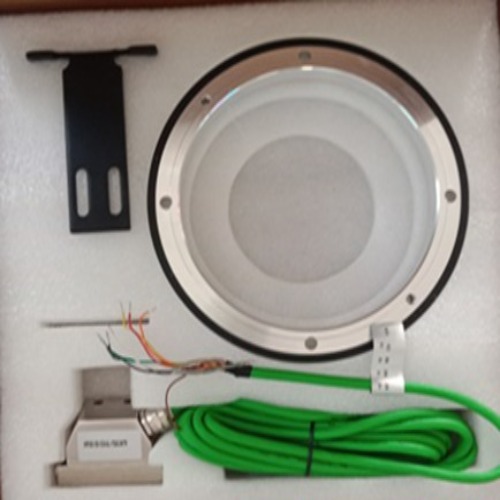About MAGNIETC RING TYPE ENCODER
- Functionality:Ring encoders typically use either optical or magnetic sensing techniques to determine rotational position.
- Optical Ring Encoders:These employ a ring-shaped optical grating that rotates relative to a stationary electro-optic transducer.
- Magnetic Ring Encoders:These consist of a magnetic ring or gear wheel (measuring body) and a sensor that detects changes in the magnetic field as the ring rotates.
- Design:They are often bearingless, which makes them immune to wear and disturbances from dust, dirt, or fibers, and allows for high mounting tolerances and flexibility in design and assembly.
- Features:
- High Precision:They can offer high resolution and accuracy in position data output.
- Robustness:Magnetic ring encoders, in particular, are known for their immunity to environmental disturbances and ability to achieve high IP protection classes, even at high speeds, due to their bearingless and fully encapsulated electronics.
- Integration:They are designed for flexible integration into various industrial machines and systems.
- Applications:Commonly used in industrial settings where precise measurement of rotation or angle is required, such as in automation and machine control.
Advanced Rotational SensingUtilizing either optical or magnetic sensing methods, ring type encoders deliver dependable measurement of rotation and angle. They are ideal for tasks requiring precision, such as in automated machinery, robotics, or process control applications.
Robust Industrial DesignEngineered for industrial use, the magnetic ring encoder features a durable measuring body and sensor system. Its silver color and size options (82 mm, 163 mm) suit various installations, while its 5 Volt power specification guarantees compatibility with most control systems.
FAQs of MAGNIETC RING TYPE ENCODER:
Q: How does the Magnetic Ring Type Encoder function in automation systems?
A: The encoder uses a magnetic ring and sensor to detect rotational position, enabling accurate feedback for automated controls and machinery, thus ensuring reliable operation and precise positioning in industrial environments.
Q: What types of sensing techniques can the ring type encoder utilize?
A: This encoder can operate with either optical or magnetic sensing. In magnetic sensing, changes in the magnetic field are detected as the ring rotates, while optical sensing involves the sensor reading interruptions or alterations in a light path.
Q: When is it recommended to use a magnetic ring type encoder over other types?
A: Magnetic ring type encoders are recommended when high accuracy and durability are required, especially in environments exposed to dust, vibration, or temperature fluctuations where traditional encoders may not perform optimally.
Q: Where are these encoders commonly installed?
A: They are typically found in industrial automation settings, machine control systems, robotics, and process monitoring equipment, wherever precise rotational or angular measurement is essential.
Q: What is the installation process for this encoder?
A: The encoder is positioned so the magnetic ring or gear wheel is aligned with the sensor, ensuring unobstructed rotation and accurate measurement. Proper wiring to the control system at 5 Volt is necessary for optimal operation.
Q: What are the benefits of using a magnetic ring type encoder in industrial environments?
A: Benefits include high measurement accuracy, resistance to tough industrial conditions, straightforward installation, and maintenance flexibility. The use of magnetic sensing also reduces wear and increases the encoders lifespan.


